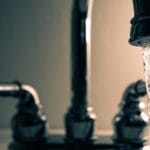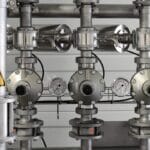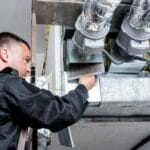Contents
Do your pipes make strange noises? Has your water pressure been acting up lately? If so, it may be time to consider getting a comprehensive plumbing maintenance check! As homeowners, keeping our home systems functioning properly is one of the most important things we can do. Not only does regular maintenance help keep problems at bay, but it can also save you from having to invest in costly repairs down the line.
When it comes to our homes, it’s essential to ensure that every system functions smoothly, and plumbing is no exception. We often take our plumbing for granted until a pipe bursts, a faucet leaks incessantly, or a drain clogs up, causing inconvenience and costly repairs.

Preventative Maintenance: A Proactive Approach
One of the main advantages of a comprehensive plumbing maintenance inspection is that it takes a proactive approach to plumbing care. Instead of waiting for a problem to occur, regular inspections and maintenance are carried out to identify and address potential issues before they escalate. By preventing plumbing problems in their early stages, you can avoid the inconvenience and expenses associated with emergency repairs.
Cost Savings in the Long Run
Plumbing repairs can be a costly affair, especially when left unattended for long periods. With the right approach, however, you can avoid hefty bills by planning out your maintenance needs in advance. In essence, you’re investing in regular upkeep that includes minor repairs, which are significantly more budget-friendly compared to major repairs resulting from neglect.
For example, a comprehensive plumbing inspection helps with identifying leaks, faulty pipes, or worn-out fixtures in your plumbing system. With early detection comes timely repairs, thus preventing further damage. Over time, this approach to plumbing maintenance can save you a substantial amount of money in comparison to reactive measures.
Enhanced Lifespan of Plumbing Systems
 Regular maintenance is crucial to extend the lifespan of your plumbing systems. Like any other mechanical system, ensuring comprehensive care, including cleaning, adjustments, and thorough inspections, can have a significant impact on the durability of pipes, fixtures, water heaters, and other components. Preemptively prolonging the lifespan of these elements could reduce the need for system replacements and save you from the inconvenience of unexpected system failures. It’s important to participate in and promote a comprehensive maintenance inspection.
Regular maintenance is crucial to extend the lifespan of your plumbing systems. Like any other mechanical system, ensuring comprehensive care, including cleaning, adjustments, and thorough inspections, can have a significant impact on the durability of pipes, fixtures, water heaters, and other components. Preemptively prolonging the lifespan of these elements could reduce the need for system replacements and save you from the inconvenience of unexpected system failures. It’s important to participate in and promote a comprehensive maintenance inspection.
Improved Water Efficiency
Ensuring improved water efficiency is crucial in today’s world, with water conservation an important consideration. A comprehensive plumbing maintenance inspection should include checking and fixing leaks, ensuring efficient water flow, and inspecting your home’s overall water usage. By identifying and repairing leaks promptly, you can reduce water wastage and lower your utility bills. Additionally, implementing water-saving devices, such as low-flow fixtures, is a recommendation that could have significant benefits for both the environment and your finances. Therefore, a comprehensive plumbing maintenance inspection could lead to reduced utility bills, increased environmental sustainability, and improved home water efficiency.
Peace of Mind
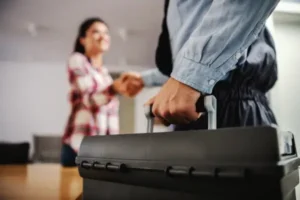 Getting in an all-inclusive plumbing maintenance inspection provides you with a peace of mind that your plumbing systems are in good hands. Your systems will be given a thorough assessment and regular maintenance by professionals in the industry. By taking care of any issues before they become major problems, your home will be safeguarded from unexpected plumbing disasters. With all of this taken care of, you will have more time and energy to concentrate on other important things in your life. Being able to rest easy and having one less thing to worry about is invaluable.
Getting in an all-inclusive plumbing maintenance inspection provides you with a peace of mind that your plumbing systems are in good hands. Your systems will be given a thorough assessment and regular maintenance by professionals in the industry. By taking care of any issues before they become major problems, your home will be safeguarded from unexpected plumbing disasters. With all of this taken care of, you will have more time and energy to concentrate on other important things in your life. Being able to rest easy and having one less thing to worry about is invaluable.
What’s included in a plumbing maintenance inspection.
- Flushing the Water Heater:
 One critical aspect of plumbing maintenance is regularly flushing the water heater. Over time, sediment and mineral deposits accumulate at the bottom of the tank, which reduces its efficiency and can lead to corrosion. By getting a plumbing inspection, professionals can flush the water heater, removing the built-up sediment and ensuring optimal performance. This process improves energy efficiency, extends the lifespan of the heater, and reduces the risk of unexpected breakdowns, saving you money on repairs or premature replacement.
One critical aspect of plumbing maintenance is regularly flushing the water heater. Over time, sediment and mineral deposits accumulate at the bottom of the tank, which reduces its efficiency and can lead to corrosion. By getting a plumbing inspection, professionals can flush the water heater, removing the built-up sediment and ensuring optimal performance. This process improves energy efficiency, extends the lifespan of the heater, and reduces the risk of unexpected breakdowns, saving you money on repairs or premature replacement.
- Snaking the Kitchen Drain with the Sewer Machine:
Kitchen drains are prone to clogs due to the accumulation of food debris, grease, and other substances. A comprehensive plumbing maintenance inspection should include snaking the kitchen drain with a sewer machine. This process involves using a specialized tool to remove any obstructions and ensure a smooth flow of water. By regularly cleaning the kitchen drain, you can prevent clogs from occurring, avoid foul odors, and maintain proper sanitation in your kitchen. Additionally, proactive maintenance minimizes the risk of costly emergency plumbing services.
- Checking and Adjusting Water Pressure:
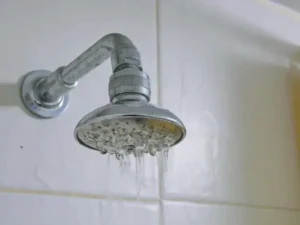 Water pressure that is too high or too low can cause significant problems within your plumbing system. High pressure can strain pipes, fittings, and appliances, leading to leaks, bursts, and premature failure. On the other hand, low water pressure can affect the performance of your fixtures and appliances, making simple tasks like showering or washing dishes frustrating. A plumbing maintenance inspection should include checking and adjusting water pressure to ensure it falls within the optimal range. By maintaining the appropriate pressure, you can prevent damage to your plumbing system, increase its efficiency, and enhance the lifespan of your fixtures and appliances.
Water pressure that is too high or too low can cause significant problems within your plumbing system. High pressure can strain pipes, fittings, and appliances, leading to leaks, bursts, and premature failure. On the other hand, low water pressure can affect the performance of your fixtures and appliances, making simple tasks like showering or washing dishes frustrating. A plumbing maintenance inspection should include checking and adjusting water pressure to ensure it falls within the optimal range. By maintaining the appropriate pressure, you can prevent damage to your plumbing system, increase its efficiency, and enhance the lifespan of your fixtures and appliances.
- Inspecting Every Plumbing Fixture, Including Hose Bibs:
A comprehensive plumbing maintenance inspection should include a thorough inspection of every plumbing fixture in your house, including hose bibs. This inspection ensures that all fixtures are in proper working condition, free from leaks, cracks, or other damage. Identifying and addressing minor issues during routine maintenance can prevent them from escalating into major problems later on. By promptly repairing or replacing faulty fixtures, you can avoid water wastage, reduce the risk of water damage, and maintain the aesthetics of your home. Furthermore, inspections provide an opportunity to detect hidden leaks, identify potential areas of concern, and take preventive measures to safeguard your plumbing system.
Investing in a comprehensive plumbing maintenance inspection is a wise decision that pays off in numerous ways. From preventing major repairs to increasing the lifespan of your plumbing systems, improving water efficiency, and providing peace of mind, the benefits are undeniable. By getting the inspection, you prioritize the care and longevity of your plumbing, ensuring a functional and hassle-free home environment. Don’t wait for a plumbing disaster to strike; take action today and enjoy the benefits of a comprehensive plumbing maintenance inspection.
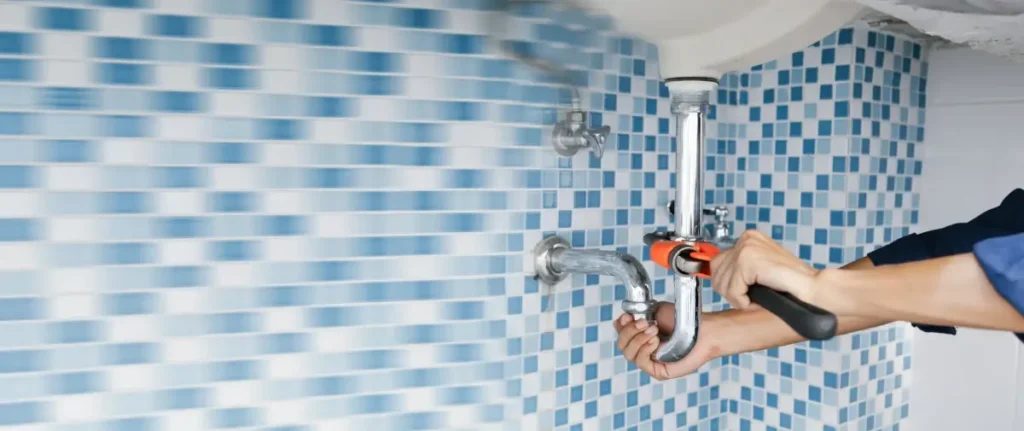
Though a plumbing inspection will assess all aspects of your system, here are six things you can do yourself to keep it running smoothly.
- Check for visible signs of corrosion or leaking pipes.
Because corrosion or leaks may be difficult to detect, it’s essential that you regularly inspect your plumbing system for signs of corrosion or leaks. If any signs such as discoloration on pipes indicate damage that needs immediate professional attention, then immediately call your plumber.
- Test the shower head and faucets for any kind of water pressure loss.
If your water pressure suddenly decreases, this could indicate an issue with either your shower head or faucets. Check all fixtures carefully for signs of damage that might be contributing to this drop; otherwise it is best to contact a plumber who will be able to identify and diagnose the source.
- Be sure to inspect the drainage system regularly in order to make sure it is functioning effectively.
Your drainage system is one of the cornerstones of your plumbing system, as it’s responsible for disposing of wastewater properly. Therefore, regular inspection of drains for signs of clogs and blockages and using a plunger when necessary are both key steps in ensuring its effectiveness.
- Check for any strange odors in the house as this could signal an issue with your drains.
Odors emanating from your drains can often indicate something is amiss. If any unusual scents emanate from them, this could indicate there is a clog or blockage somewhere within the pipe system; should this occur it would be wise to contact a professional plumber immediately in order to properly identify and address this problem.
- Look underneath sinks, behind appliances, and in places that you don’t usually visit.
Even if all of your plumbing components seem in fine condition, it’s always advisable to conduct an audit and inspect areas that you might not typically visit, such as under sinks and behind appliances as well as closets and cabinets. If any signs of leaks or corrosion arises then professional assistance should be sought immediately.
- Run the hot and cold water taps to see if there is a temperature difference.
If you notice a large difference in the temperature between hot and cold water, this could be a sign that there is an issue with your pipes. This can usually be fixed by adjusting the thermostat on your water heater or making some other minor adjustments, but it’s best to contact a professional who will be able to make sure that everything is working properly.
By following these six tips, you’ll be able to keep your plumbing system functioning efficiently and avoid major problems from developing. Should any damage or issues appear with your plumbing system, however, it is always advisable to seek professional assistance immediately – this could save both time and money over time.
Don’t risk costly repairs! Let Chaffee Air inspect your plumbing system and catch potential issues before they become major problems.


